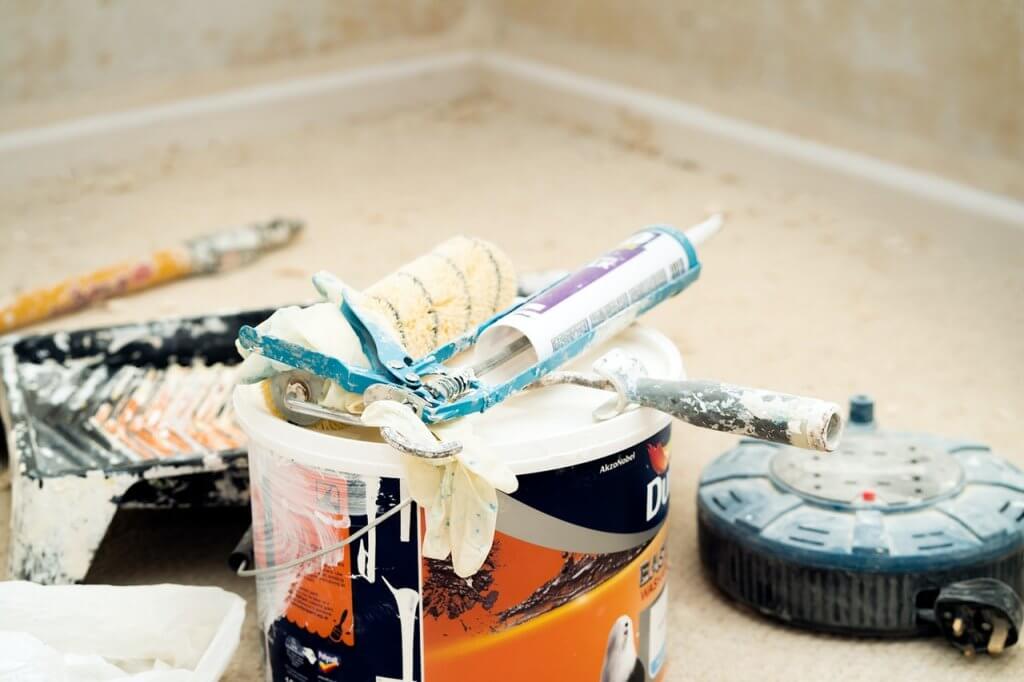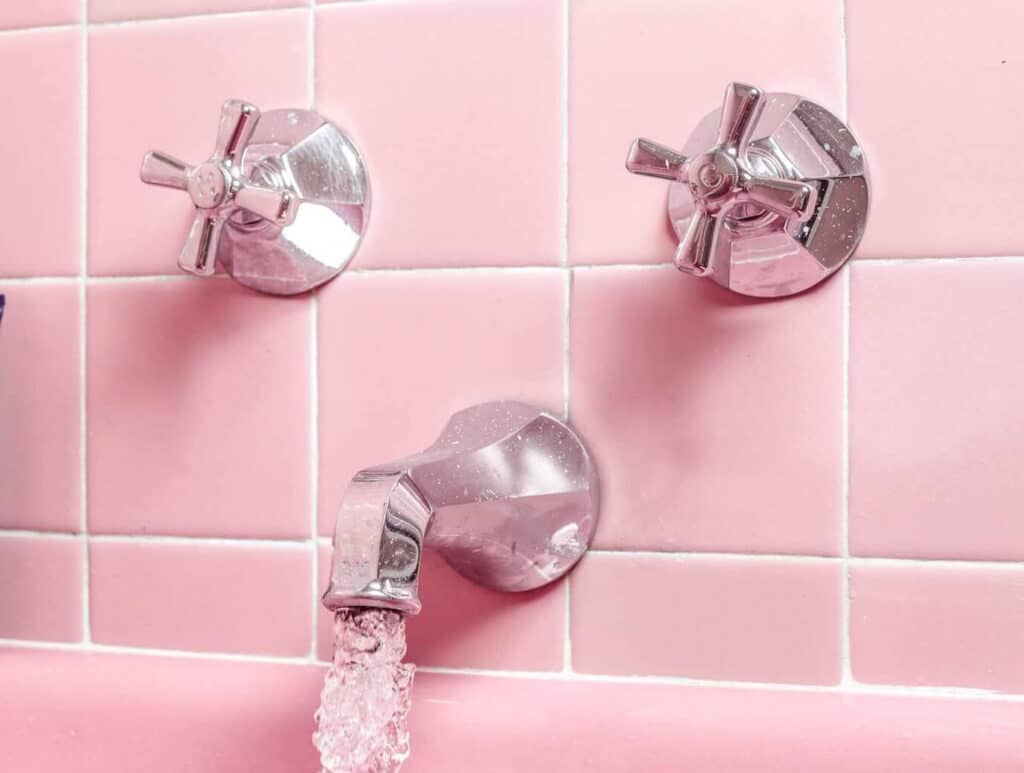Your Step-By-Step Guide of How to Caulk Trim
Curious how to caulk trim like a pro? We share the steps to caulking, the tools you need, and caulking finishing tips to nail a home project.
Does your home have weatherized doors and windows that reveal unsightly gaps? How about your tub, does it have frayed sealant? And your once-pristine picture molding, does it appear to be separating?
Then you’re probably wondering how to caulk trim!
You don’t have to hire experts to complete your next home improvement project. If you’re willing to learn what the job involves, it’s a great DIY experience.
The steps to caulking well are the same whether you are an amateur or expert.
Baseboards, moldings, and other trimmings are typically subject to gapping over time. And caulking is the solution to getting rid of those unsightly gaps.
When you do it right, caulking is indistinguishable from the paint. It gives the overall look a seamless finish and makes the job look professionally done.
So how do you work this final magic trick into your painting without making a massive mess? This step-by-step guide breaks down everything you need to caulk trim, tutorial style.
The Importance of Caulking
Caulk is an indispensable tool home repair technicians, painters, and other professionals use. Because it’s moldable, it can fill in gaps and seal holes that you can’t easily fix otherwise.
You can use it to seal gaps at doors and windows, preventing unnecessary heating and air conditioning repair work and costly energy bills.
With nothing but a 10-ounce tube of product and a caulk gun, it’s possible to cover holes and damage to walls quickly and cheaply.
Yes, it’s common to weatherproof doors and windows with caulk, but it also seals leaky tubs and can do more. But beyond the repair aspect, caulk is also vital as a preventative tool.
Caulking While You Paint
Often, it makes sense to caulk as you prepare to paint your home. These are two DIY projects that can go hand in hand.
So when you’re choosing the paint for the job you’re about to do, make sure you grab some caulk, too. It’s vital to use it on little trimming areas, joints, and small spaces.
Even if there’s a tiny area hidden when you paint it, remember that houses will shift over the years. As the foundation gradually adjusts and settles, things like molding around doorways also move. Caulk covers up the small gaps before they expand over time.
You can apply caulk around windows to cover misalignments where the panes aren’t perfectly connecting at a joint. At the same time, the caulk works as a sealant to prevent drafts and escaping energy. Thanks to its preventative nature, caulking can actually save you from more expensive projects down the road.
Before you paint, use caulk to adhere the joints of baseboards, molding, and trim together. Then, you can paint over the dry, smoothed-out caulk to make a finished look that doesn’t have any stops and starts.
Similar: How to Build a Victory Patio Garden
1. Choosing Your Caulk
If you’ve never used caulk before, you should be aware that not all of the tubes you see on the hardware shelf are the same thing. There are lots of varieties of caulk, and each one does something different.
Your basic caulking gun is a one-size-fits-all tool, but the tubes that go in it are distinctly separate.
The four most commonly sold in stores should get you through any DIY project you’re trying to tackle. It’s best if you understand what each type is for, though, to get the right caulk.
Types of Caulk
As you browse the shelves of the online options, you’ll see acrylic latex, solvent-based, polyurethane, and hybrid caulks. Each caulk type has its pros and cons, depending on the job and your budget.
Acrylic Latex Caulk
Acrylic latex caulk is the type that’s best to use in conjunction with most paint jobs. Because it’s latex, it’s easy to spread, apply, and adjust into a smooth surface. The acrylic part makes it easy to clean up with a bit of water and makes it ideal for beneath a painted surface.
You might see some that say “silicone caulk” or “siliconized.” Some manufacturers add silicone to the acrylic to make it more flexible and help it to stick in place better.
Solvent-Based Caulk
Solvent-based caulk will be what you need for heavy-duty work. The solvent ingredient offers resistance to stains and chemicals on concrete. Solvent-based is the caulk type professional contractors use when constructing and repairing driveways, roofs, and pools.
Some caulk material will degrade when exposed to too much sunlight, but solvent-based products do not. You can also apply solvent-based caulk directly to wet surfaces, which is a plus in major construction projects.
Polyurethane Caulk
Polyurethane caulk is also common for use in exterior jobs, like driveways and places that weather the elements.
However, this type of caulk doesn’t have the benefits of solvent-based varieties. They’re hard to apply consistently, and you may have to wait for them to dry before you can move on with your work.
Hybrid Caulk
The last type of commonly seen caulk is a hybrid type. These tubes mix silicone with polyurethane to combine the benefits of both ingredients.
Polyurethane and silicone together make a caulk that adheres well, is flexible, and lasts a long time. Price is the downside to this type of caulk, since a high-quality version is typically the most expensive variety.
Any of these products do the trick for your painting job. But if you just want a quick fix in a room without heavy traffic, latex caulk is efficient and straightforward. It’s also the most paintable out of all four kinds.
Similar: Using Stained Glass Paint as Your Next DIY Project
2. Prepare the Area
Unlike many other home DIY projects, caulking doesn’t require much prep work. You’ll need to gather the equipment and clean the surface where you will apply the caulk.
Gather Your Supplies
To caulk baseboards and other trim, gather the following equipment:
- A caulking gun
- Latex caulk (white is the most common color)
- Painter’s tape
- Wet wipes to quickly remove smudges
Cleaning the area before you caulk and paint may take a little more work if there’s old caulking still hanging around. Before you clean the area, anything that’s already in the way has to go.
Removing Old Caulk
Over the years, caulk will begin to degrade. As it does, it will discolor, start to crack, and show signs of separating.
Getting rid of that old material isn’t hard, but it can be time-consuming.
First, try to figure out what kind of caulk was used to do the previous job. Knowing this will help you get started removing it.
If it is silicone-based, you’ll see that it looks rubbery. Water-based caulk, on the other hand, appears more rigid and will chip easier.
You’ll find caulk remover for both kinds at the store. We especially like this one that removes old caulk and helps you apply new caulk.
With your caulk removal tool and a utility knife, slowly chip away at the old material. You may find a putty knife is handy to gently scrape off any residue.
After all the old caulk is gone, use bleach or another cleaning product to get the area ready to paint.
3. Plan Ahead
Caulking a big job requires proper planning. If you don’t have all the tools and don’t do the work in the appropriate order, you’re setting yourself up for an amateur finished look.
Think about when you mop the floor. If you aren’t careful, you end up boxing yourself into a corner that you can’t get out of without stepping on the wet surface.
You can make similar mistakes in a paint job, leaving wet paint in an area you need to caulk. Using the wrong paintbrush and not having anything to clean up with can mean getting stuck with paint streaks on the wrong walls.
(Let’s not forget, there are other ways to add color to your space if you don’t want to commit to painting a room or trim!)
Slow and Steady Gets the Job Done Right
Planning which walls to do first and when to caulk the trim reduces accidental problems and delays. Yes, it can take longer to prepare the area for your work, but it saves a lot of time on the backend cleaning up mistakes.
For instance, taping off the areas where you’re caulking ensures you work in a straight line. Painter’s tape helps prevent messed-up paint jobs or caulk from ending up where it’s not supposed to be.
Be sure to use painter’s tape, so the caulk comes off cleanly without leaving any residue behind.
Pro tip: Apply the tape around the perimeter of the area where you’re caulking. After you’ve applied the caulk and smoothed it out, pull the tape off immediately. If you pull it off before the caulk dries, it comes off much more effortlessly.
Related: The 11 Best Hutches on the Market – What Makes Them Great
4. Cut and Caulk
The tip has to be cut off of a new tube of caulk before you put it in the caulking gun. Cutting the tube right is imperative if you want your job to go smoothly.
How much of the tip you cut depends on the size of the space you’re trying to fill. Most of the tips have pre-measured increments of ⅛”, ¼”, and 5/16”. The best thing to do is start with the ⅛” since it’s the smallest tip.
You can always cut more caulk tip if you need to, but you can’t get back down to a smaller cut.
Hold the scissors at a 45-degree angle, then cut the tip of the tube to the correct size. With this angle, the caulk line applies evenly as you steadily slide it across the edge of the moulding or other surface.
Pro tip: Before you jump in and start your caulking job, practice how much pressure to use on another surface. It can be jumpy at first as you get used to the handle of the caulking gun.
Wipe the bead of caulk you practiced with up with a damp rag and, when you’re ready, start caulking baseboards.
5. The Finishing Touches
Now that you filled the joint between the baseboards or the drywall hole, you still have some work ahead of you. Use your finger to smooth the caulk until it’s uniform with the rest of the trim. It should be flat enough that when it’s painted, you can’t tell there’s any caulk there.
If you use painter’s tape, all you have to do is slide your fingertip across the edge. The tape will catch any excess caulk. When you pull it off, the new caulk will be perfectly straight and smooth.
But if there is anything left, you can gently remove it with a damp paper towel or a wet rag.
Make sure you clean up the caulking gun and any other supplies while the caulk is still wet. Once it dries, it can be a hassle to get it off of your equipment (and your hands).
Conclusion
Learning how to caulk trim is as simple as these five steps. Buying the right caulk, cleaning the area, and planning ahead will help ensure your project goes off without a hitch!
Whether you’re caulking over drywall, along a baseboard, or sealing up some drafty windows, the process is the same. Once you master the process of cutting the caulk tube and holding the gun, the rest is simple.
The best part is that if you can caulk trim, you can caulk anything! You never know when this skill will come in handy as a homeowner or an apartment renter.
You’ve conquered the trim-caulking lesson. What’s next on your how-to DIY list?

